Complete Solutions to Assertion And Reason of chapter LAWS OF MOTION of Class 11 book with complete answers and questions
| Class 11 | PHYSICS |
| Chapter | LAWS OF MOTION |
| DC PANDEY | Assertion And Reason |
| Number Of Questions | 28 |
| Academic Year | 2023-24 |
Assertion: If net force on a body zero, it is either at rest or moving with a constant linear velocity. Nothing else can happen.
Reason: Constant velocity means linear acceleration is zero
View SolutionAssertion: Three concurrent force are `F_(1),F_(2)` and `F_(3)`. Angle between `F_(1)` and `F_(2)` is `30^(@)`and between `F_(1)` and `F_(3)` is `120^(@)`. Under these conditions forces cannot remain in equilibrium.
Reason: At least one angle should be greater then `180^(@)`.
View SolutionAssertion : Two identical blocks are placed over a rough inclined plane. One block is given an upward velocity and the other is downward direction. If `mu = (1)/(3)` and `theta = 45^(@)` the ratio of magnitudes of acceleration of two is `2:1`
Reason :The desired ratio is `(1 + mu)/(1 - mu)`
View SolutionAssertion: A block `A` is just placed inside a smooth box `B` as shown in figure. Now the box is given an acceleration `a = (2 hat(i) - 2 hat(j)) m//s ^(-2)`. Under the acceleration block `A` cannot remain in the position shown.
Reason: Block will require `ma` force for moving with acceleration `a`.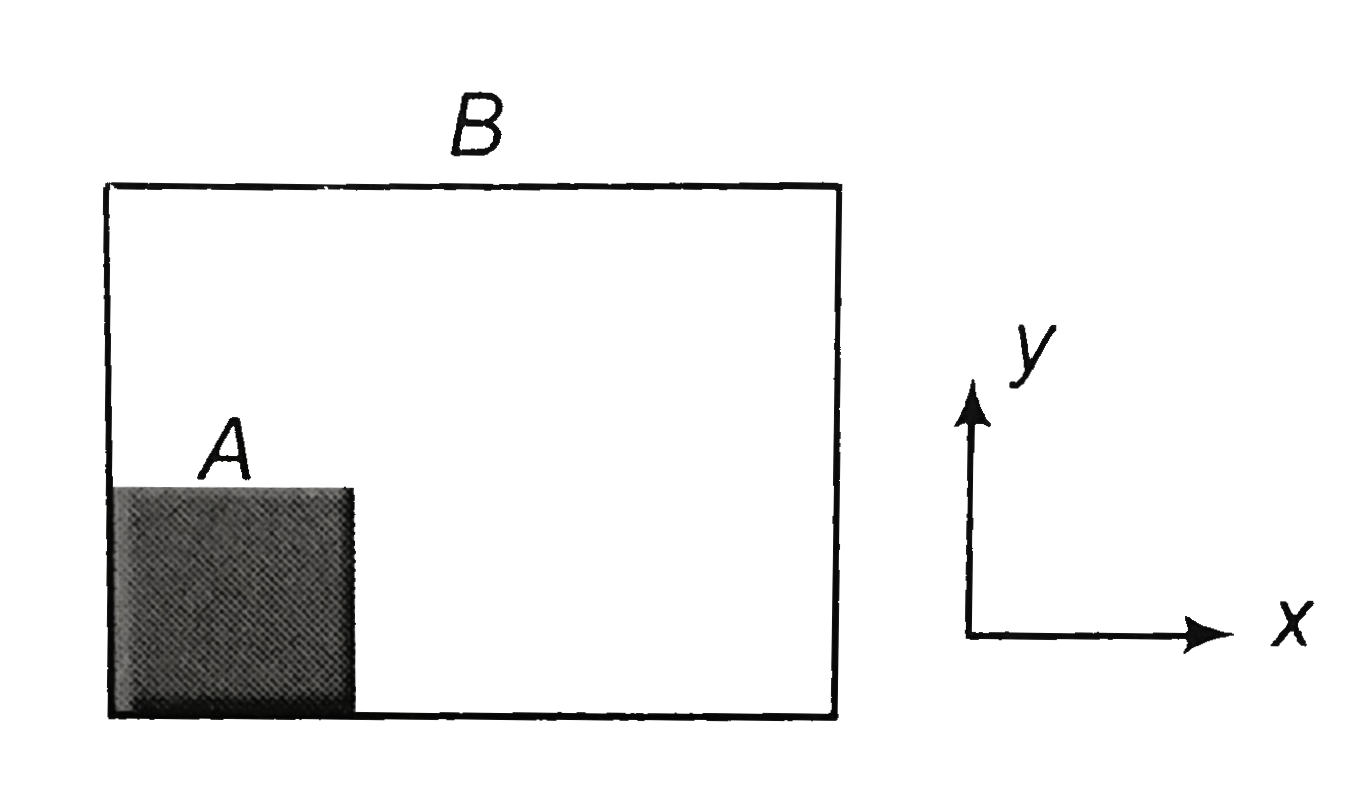
View SolutionA block is kept at rest on a rought ground as shown. Two force `F_(1)`and `F_(2)` are acting on it. If we increased either of the two force `F_(1)`and `F_(2)`, force of friction acting on the block will increase.
By increasing `F_(1)`, normal reaction from ground will increase.
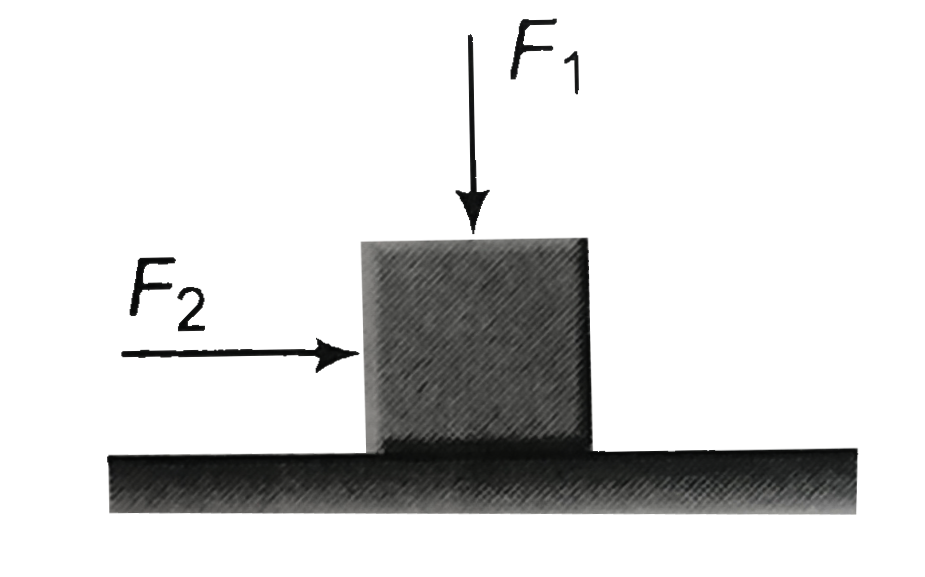
View SolutionIn the figure shown, force of friction on `A` from `B` will always be right wards
Friction always opposes the relative motion between two bodies in contact.
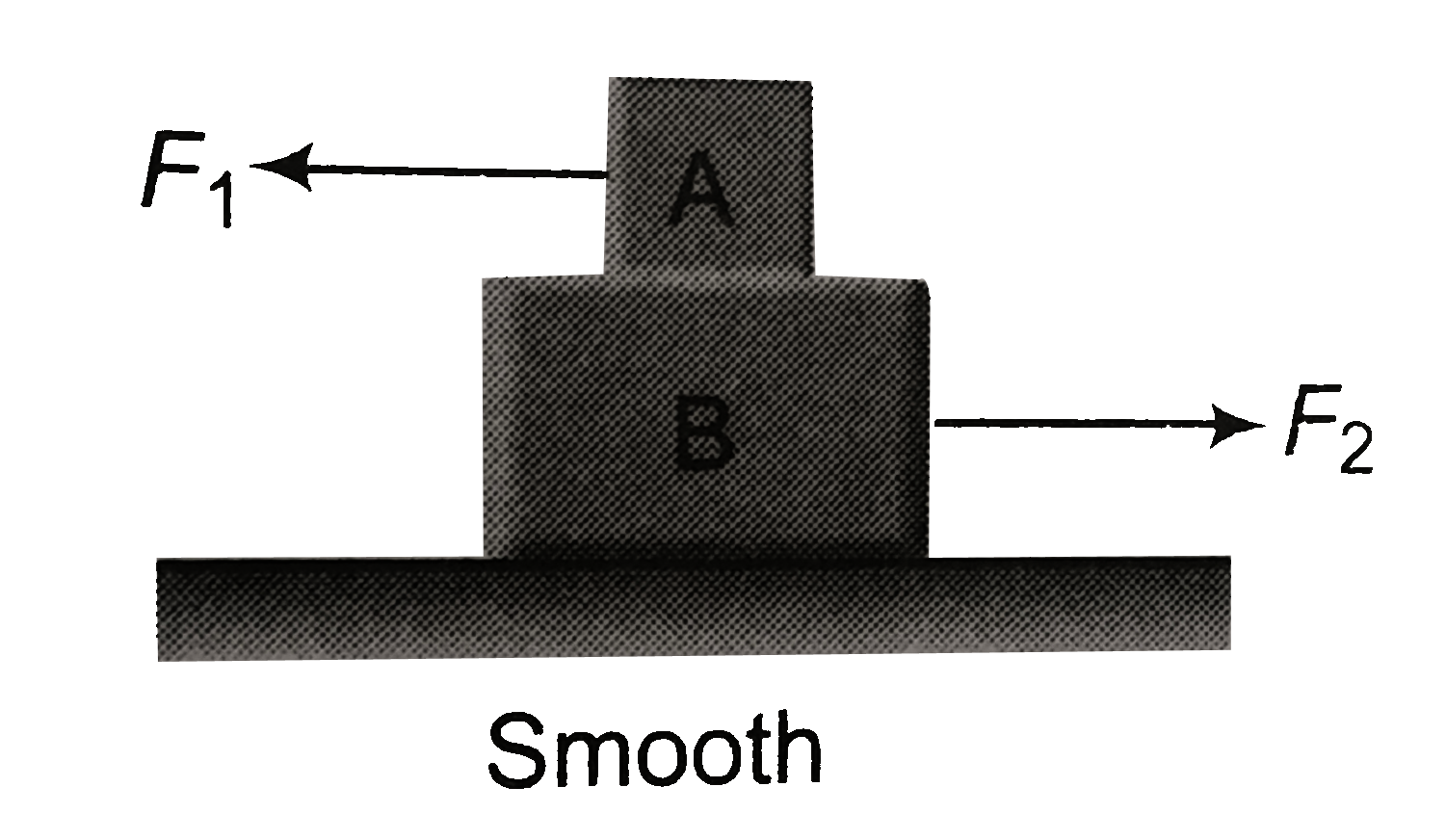
View SolutionIn the figure shown tension in string `AB` always lies between `m_(1)g` and `m_(2)g`. `(m_(1)!=m_(2))` <
Tension in massless string is uniform throughout.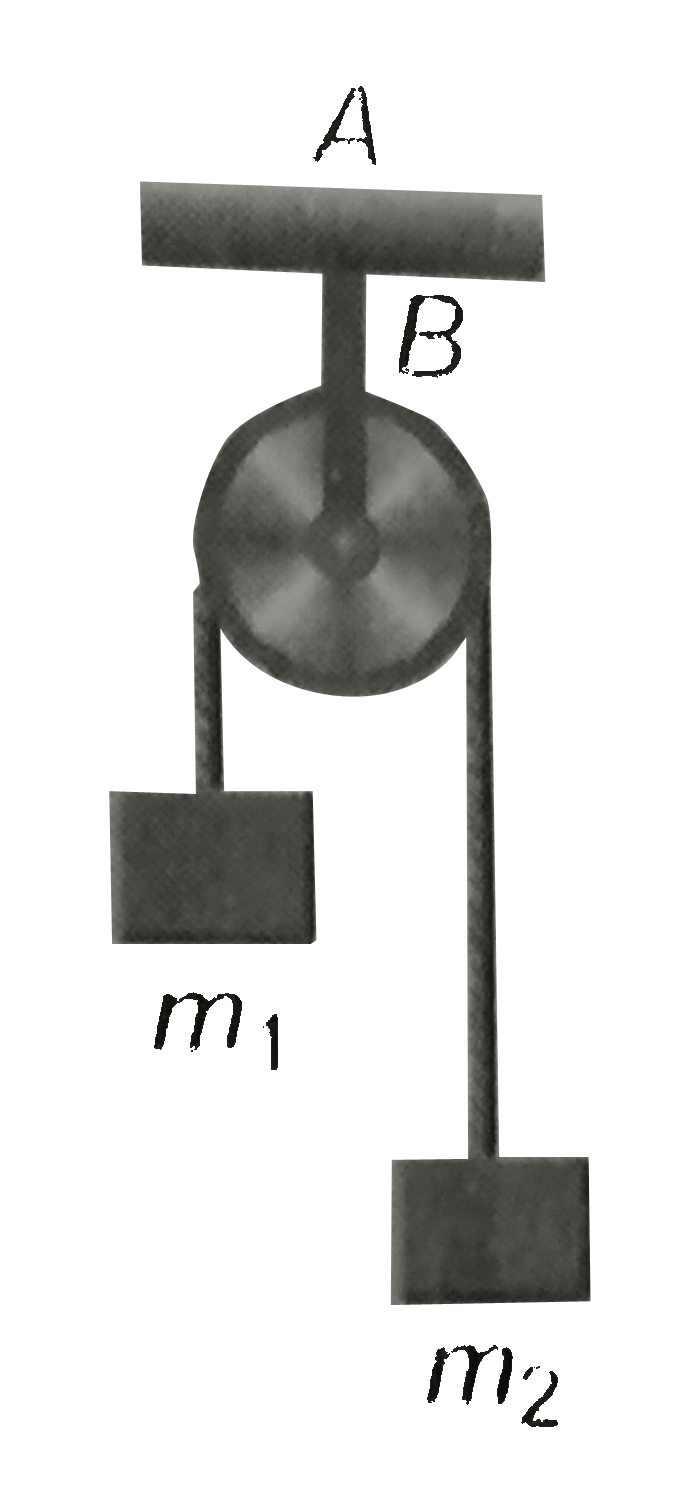
View SolutionTwo frame `S_(1)` and `S_(2)` are non-inertial. Then frame `S_(2)` when observed from `S_(1)` is inertial.
A frame in motion is not necessarily a non-inertial frame
View SolutionMoment of concurrent forces about any point is constant.
If vector sum of all concurrent forces is zero, then moment of all the forces about any point is also zero.
View SolutionMinimum force is needed to move a block on rought surface, if `theta =` angle of friction.
Angle of friction and angle of repose are numerically same.
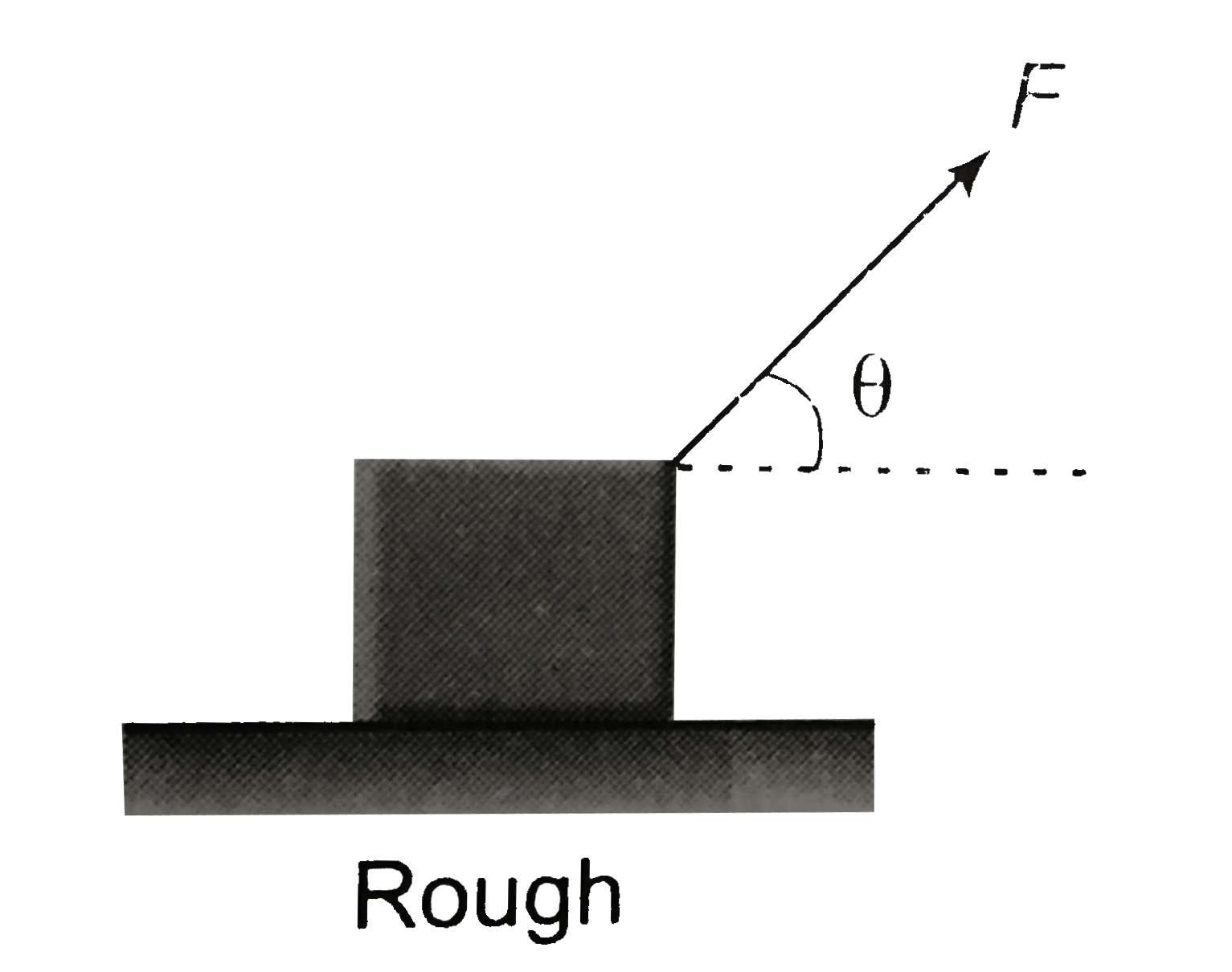
View SolutionWhen a person walks on a rough surface, the frictional force exerted by surface on the person is opposite to the direction of his motion.
It is the force exerted by the road on the person that causes the motion.
View SolutionThese questions consists of two statements each printed as Assertion and Reason. While answering these question you are required to choose any one of the following four responses
Assertion The weighing machine measures the weight of a body.
Reason Weightlessness means the absence of weight.
View SolutionThese questions consists of two statements each printed as Assertion and Reason. While answering these question you are required to choose any one of the following four responses
Assertion When a person walks on a rough surface, the net force exerted by surface on the person in the direction of his motion.
Reason It is force exerted by the road on the person that causes the motion.
View SolutionThese questions consists of two statements each printed as Assertion and Reason. While answering these question you are required to choose any one of the following four responses
Assertion Friction opposes motion of a body.
Reason Static friction is self adjusting while kinetic friction is constant.
View SolutionThese questions consists of two statements each printed as Assertion and Reason. While answering these question you are required to choose any one of the following four responses
Assertion Friction always opposes the relative motion of two bodies.
Reason Without friction also, one can move on a smooth surface.
View SolutionThese questions consists of two statements each printed as Assertion and Reason. While answering these question you are required to choose any one of the following four responses
Assertion A block of weight 10 N is pushed against a vertical wall by a force of 15 N. The coefficient of friction between the wall and the block is 0.6. Then, the magnitude of maximum frictional force is 9 N.
Reason For given system block will remain stationary.
View SolutionThese questions consists of two statements each printed as Assertion and Reason. While answering these question you are required to choose any one of the following four responses
Assertion A body of mass 10 kg is placed on a rough inclined surface `(mu=0.7)`. The surface is inclined to horizontal at angle `30^(@)`. Acceleration of the body down the plane will be zero.
Reason Work done by friction is always negative.
View SolutionThese questions consists of two statements each printed as Assertion and Reason. While answering these question you are required to choose any one of the following four responses
Assertion During free fall of a person one feels weightlessness because his weight becomes zero.
Reason He falls with an acceleration of g.
View SolutionThese questions consists of two statements each printed as Assertion and Reason. While answering these question you are required to choose any one of the following four responses
Assertion Earth is an inertial frame.
Reason A frame in motion is sometimes an inertial frame and sometimes a non-inertial.
View SolutionThese questions consists of two statements each printed as Assertion and Reason. While answering these question you are required to choose any one of the following four responses
Assertion Static friction acting on a body is always greater than the kinetic friction acting on this body.
Reason Coefficient of static friction is more than the coefficient of kinetic friction.
View SolutionThese questions consists of two statements each printed as Assertion and Reason. While answering these question you are required to choose any one of the following four responses
Assertion A string has a mass m. If it is accelerated, tension is non-uniform and if it is not accelerated, tension is uniform.
Reason Tension force is an electromagnetic force.
View SolutionThese questions consists of two statements each printed as Assertion and Reason. While answering these question you are required to choose any one of the following four responses
Assertion In the diagram shown in figure, string is massless and pulley is smooth, Net force on 1 kg block is `(10)/(3)`N.
Reason Net force on both the blocks will be same.

View SolutionThese questions consists of two statements each printed as Assertion and Reason. While answering these question you are required to choose any one of the following four responses
Assertion A particle is thrown vertically upwards. If air resistance is taken into consideration then retardation in upward journey is more than the acceleration in downward journey.
Reason Some mechanical energy is lost in the form of heat due to air friction.
View SolutionThese questions consists of two statements each printed as Assertion and Reason. While answering these question you are required to choose any one of the following four responses
Assertion In the system of two blocks of equla masses as shown, the coefficient of friction between the blocks `(mu_(2))` is less than coefficient of friction `(mu_(1))` between lower block and ground. For all values of force F applied on upper block, lower block remains at rest.
Reason Frictional force on lower block due to upper block is not sufficient to overcome the frictional force on lower block due to ground.

View SolutionThese questions consists of two statements each printed as Assertion and Reason. While answering these question you are required to choose any one of the following four responses
Assertion In the figure shown, block of mass m is stationary with respect to lift. Force of friction acting on the block is greater than `mg sin theta`.
Reason If lift moves with constant velocity, then force of friction is equal to `mg sin theta`
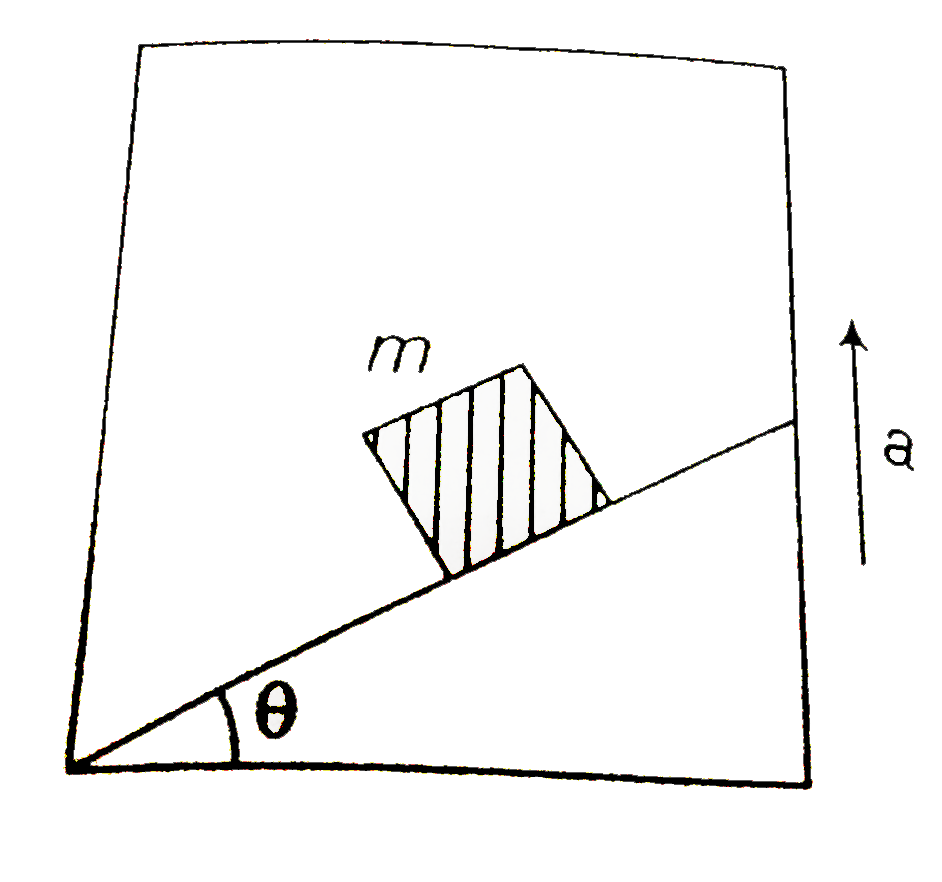
View SolutionThese questions consists of two statements each printed as Assertion and Reason. While answering these question you are required to choose any one of the following four responses
Assertion In the shown figure, tension T connected to the ceiling is `10 N lt T lt 20 N`

Reason System is not stationary.
View SolutionThese questions consists of two statements each printed as Assertion and Reason. While answering these question you are required to choose any one of the following four responses
Assertion Two forces are acting on a rope lying on a smooth table as shown in figure. In moving from A to B, tension on string decrease from 2F to F.

Reason Situation will becomes in determinant, if we take it a massless string.
View SolutionThese questions consists of two statements each printed as Assertion and Reason. While answering these question you are required to choose any one of the following four responses
Assertion Block A is resting on one corner of a box as shown in figure. Acceleration of box is `(2hati+2 hatj)ms^(-2)`. Let `N_(1)` is the normal reaction on block from vertical wall and `N_(2)` from ground of box. Then `(N_(1))/(N_(2))=(1)/(6)`.(Neglect friction)
Reason `N_(1)=0`, if lift is stationary.

View Solution
Assertion And Reason questions and complete solutions for chapter LAWS OF MOTION of DC PANDEY ENGLISH of Class 11
All Exercises from DC PANDEY Class 11 PHYSICS LAWS OF MOTION
- Assertion And Reason
- Chapter exercises (A) Taking it together
- Check point 5.1
- Check point 5.2
- Check point 5.3
- Check point 5.4
- Comprehension
- Example
- Exercise 8.1
- Exercise 8.2
- Exercise 8.3
- Exercise 8.4
- Exercise 8.5
- Match the columns
- Medical entrances gallery
- Miscellaneous Examples
- Objective Question
- Single Correct
- Solved Examples
- Subjective Question